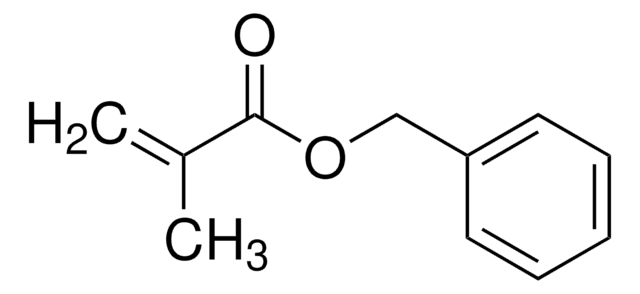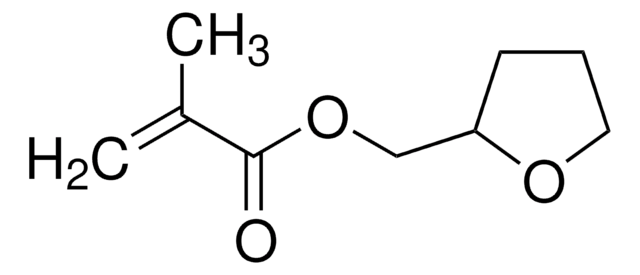290807
2-Ethylhexyl methacrylate
98%, contains ~50 ppm monomethyl ether hydroquinone as stabilizer
Synonym(s):
2-EHA, EHMA
About This Item
Recommended Products
vapor density
6.9 (vs air)
Assay
98%
contains
~50 ppm monomethyl ether hydroquinone as stabilizer
refractive index
n20/D 1.438 (lit.)
bp
120 °C/18 mmHg (lit.)
density
0.885 g/mL at 25 °C (lit.)
SMILES string
CCCCC(CC)COC(=O)C(C)=C
InChI
1S/C12H22O2/c1-5-7-8-11(6-2)9-14-12(13)10(3)4/h11H,3,5-9H2,1-2,4H3
InChI key
WDQMWEYDKDCEHT-UHFFFAOYSA-N
Looking for similar products? Visit Product Comparison Guide
Related Categories
General description
Application
- As a monomer to prepare poly(2-phenoxyethyl methacrylate-co-2-phenoxyethyl acrylate-co-2-ethylhexyl methacrylate) (PPPE) intraocular lenses used in cataract treatment. Polymers with 2% 2-ethylhexyl methacrylate are foldable and showed excellent optical and thermomechanical properties.
- To prepare copolymer for the surface modification of dental composite resins to control plaque formation. EHMA imparts water resistance and antifouling properties of dental resins.
- As an internal plasticizer to prepare photo-crosslinked shape memory polymer films used as a photoprintable resins in stereolithography.
- As a precursor to synthesize hydrogels for fabricating contact lenseswith flexibility, permeability, and comfort.
Signal Word
Warning
Hazard Statements
Precautionary Statements
Hazard Classifications
Aquatic Chronic 3 - Eye Irrit. 2 - Skin Irrit. 2 - Skin Sens. 1 - STOT SE 3
Target Organs
Respiratory system
Storage Class Code
10 - Combustible liquids
WGK
WGK 1
Flash Point(F)
197.6 °F - closed cup
Flash Point(C)
92 °C - closed cup
Personal Protective Equipment
Certificates of Analysis (COA)
Search for Certificates of Analysis (COA) by entering the products Lot/Batch Number. Lot and Batch Numbers can be found on a product’s label following the words ‘Lot’ or ‘Batch’.
Already Own This Product?
Find documentation for the products that you have recently purchased in the Document Library.
Customers Also Viewed
Our team of scientists has experience in all areas of research including Life Science, Material Science, Chemical Synthesis, Chromatography, Analytical and many others.
Contact Technical Service














